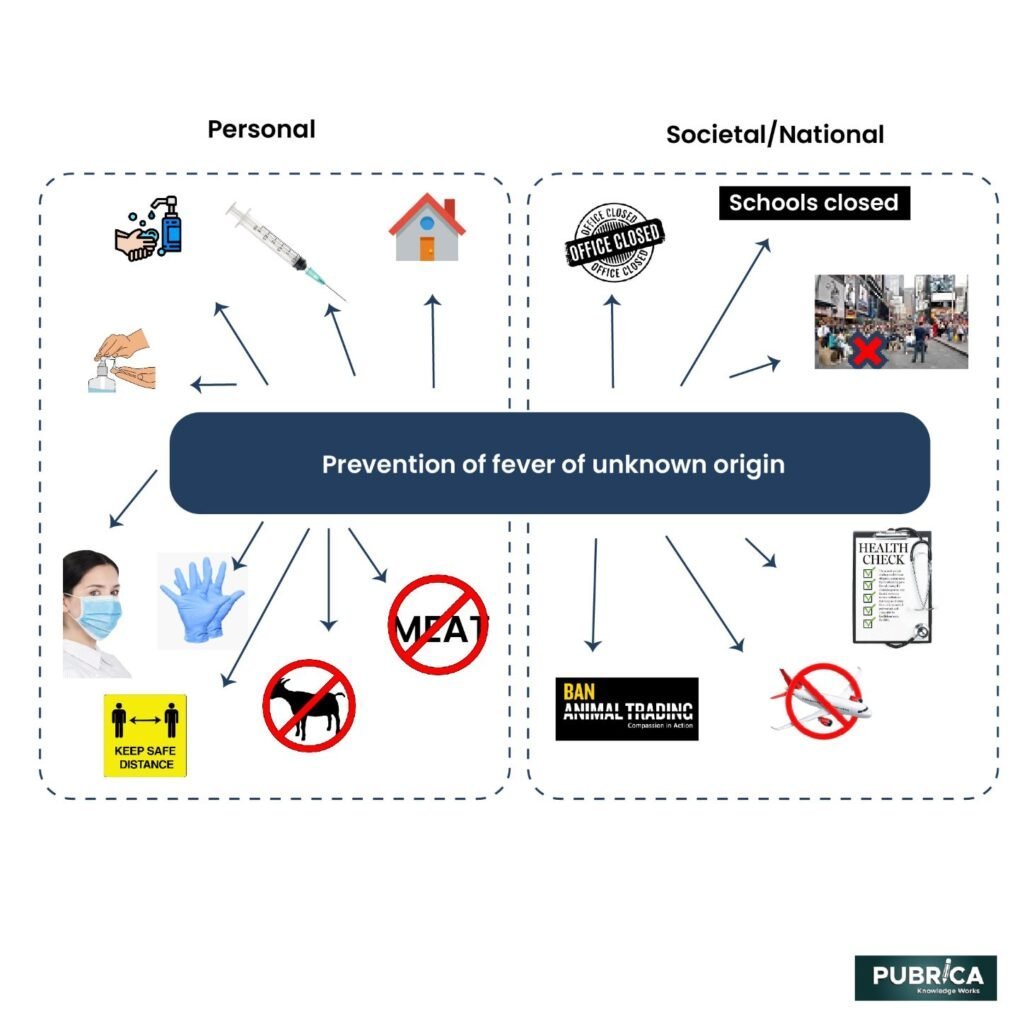
How to Write an Introduction section of your scientific manuscript:
April 7, 2020
Clinical Epidemiology and Clinical Research
April 27, 2020In brief
- Fever is one of the most commonly seen symptoms in patients.
- The diagnostic strategy of patients with Fever is well established even with the Fever of unknown origin.
- Petersdorf and Beeson initially defined Fever of unknown origin (pyrexia) in 1961 as body temperature higher than 38.3oC on several occasions(Harada et al., 2020), accompanied by more than three weeks of illness and failure to reach a diagnosis after one week of inpatient investigation.
In medical service, it remains one of the most difficult diagnostic challenges. It may arise due to many reasons, e.g., infections, inflammatory/rheumatic,malignant or neoplastic invasions, and miscellaneous disorders, and(RG & Beeson, 1961). It may also occur in organ transplants and immunodeficiency disorders.
Contagious Fever is caused by bacteria, viruses or any other infection. Majority of the times, Fever of unknown origin is infectious by nature, followed by neoplastic and rheumatic causes.The mortality rate is 12-35% depending upon the underlying aetiology. Avoiding sources of infection and maintaining good hygiene practices are the best way to prevent a fever(Santana et al., 2019).
It is imperative to limit the spread of life-threatening Fever of unknown origin. Since the cause of the Fever is unknown, making the treatment and management extremely difficult, taking a few preventive steps can help prevent the spread of life-threatening fevers.

Personal preventions
- Make sure vaccinations are up to date. While travelling, check for additional vaccinations if required.
- Stay inside home.
- Hands should be regularly washedwith soap and water for atleast 20 seconds, especially after using the washroom, before eating, and after blowing the nose, coughing or sneezing, before and after cooking, after handling animal or animal wastes.
- Use alcohol-based hand sanitizer with atleast 60% alcohol, post handwash. It kills viruses that may be on the skin.
- Cover oneself when someone sneezes or coughs while in proximity. It is to avoid small liquid droplets from the person’s nose or mouth that may contain a virus.
- Avoid touching eyes, nose and mouth. Contaminated hands can transfer the infective agent.
- Use personal protective equipment like face masks, gloves. Dispose of them immediately after use.
- Do not share personal items like toothbrush, comb or razor blade. Avoid sharing drinking glasses or dining utensils.
- Disinfect infection-prone areas in your house like kitchen and bathroom, as they harbour high concentrations of bacteria and infectious agents.
- Keep distance. Maintain atleast 1 metre (3 feet) distance between yourself and anyone who is coughing or sneezing.
- Seek medical help early if you get mild symptoms like Fever, cough, difficult breathing.
- Avoid contact with any biological material (blood, fluid, etc.) that may be infective.
- Refrain from eating animal-derived meat/protein. Eat only well-cooked food.
- Keep away from pets.
- Avoid bug-borne pathogens by using insect repellant or fumigation regularly.
- Keep yourself updated regarding the information provided by national and local authorities.
Societal preventions
- People should be quarantined inside their home by authorities.
- Schools and public offices need to close at the time of transmission.
- Avoid face to face meetings, instead telephonic conversations.
- Any Fever should be reported immediately to the nearest healthcare centre.
- Illegal trade of wild animals and poultry products need to be banned.
- People travelling from one place to another should be quarantined approximately for two weeks in case of spread of unknown Fever
- Travellers urged to refrain from going to areas where the outbreak of unknown Fever has occurred.
- Medical attention to be sought and share travel history if required.
Myth buster
- Antibiotics do not work against viruses, but only bacteria.
- Spraying of alcohol or chlorine does not kill the infective biological agent that has already entered the human body.
- Majority of the vaccine available is not effective against unknown Fever. However, vaccines for respiratory illness should be given.
- UV sterilization was not advisable for hand, as they cause irritation.
- Hand dryers are not effective in killing infective agents.
- In Clinical Research, older people with pre-existing medical conditions are more vulnerable to contracting the illness.
- Garlic has some anti-microbial properties but does not help prevent infection-related Fever.
Conclusion
Overall, public health laws can help in medical,control the spread of Fever of unknown origin. Preventive measures like screening, education, counselling and other strategies help in minimizing the spread of Fever. The balance between the public’s health and private rights of citizens transparently and ethically should be maintained to overcome the spread of Fever of unknown origin(Gostin et al., 2017).
References
- Gostin, L. O., Magnusson, R. S., Krech, R., Patterson, D. W., Solomon, S. A., Walton, D., Burci, G. L., Cathaoir, K. �, Roache, S. A., & Kieny, M.-P. (2017). Advancing the Right to Health The Vital Role of Law. American Journal of Public Health, 107(11), 1755. https://www.ncbi.nlm.nih.gov/pmc/articles/PMC5637685/
- Harada, Y., Masuda, M., Hirosawa, T., Takase, H., Morinaga, K., Nin, M., & Shimizu, T. (2020). Safety and efficacy of outpatient follow-up for referred patients with undiagnosed fever. Medicine, 99(5), e18532. https://doi.org/10.1097/MD.0000000000018532
- RG, P., & Beeson. (1961). Fever of unexplained origin: report on 100 cases. Medicine, 40, 1–30. https://doi.org/10.1097/00005792-196102000-00001
- Santana, L. F. e, Rodrigues, M. de S., Silva, M. P. de A., Brito, R. J. V. C. de, Nicacio, J. M., Duarte, R. M. S. de C., & Gomes, O. V. (2019). Fever of unknown origin – a literature review. Revista Da Associação Médica Brasileira, 65(8), 1109–1115. https://doi.org/10.1590/1806-9282.65.8.1109
